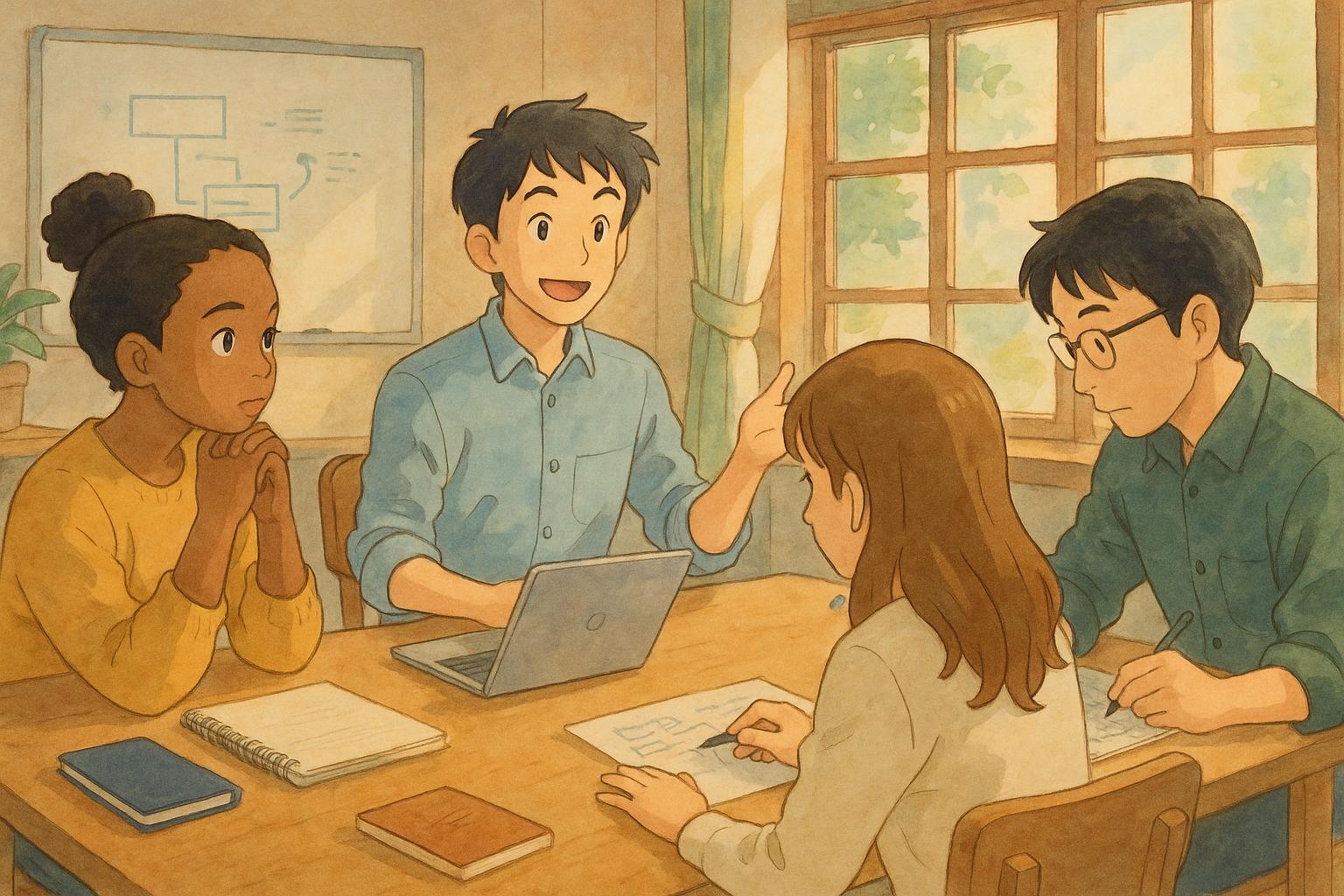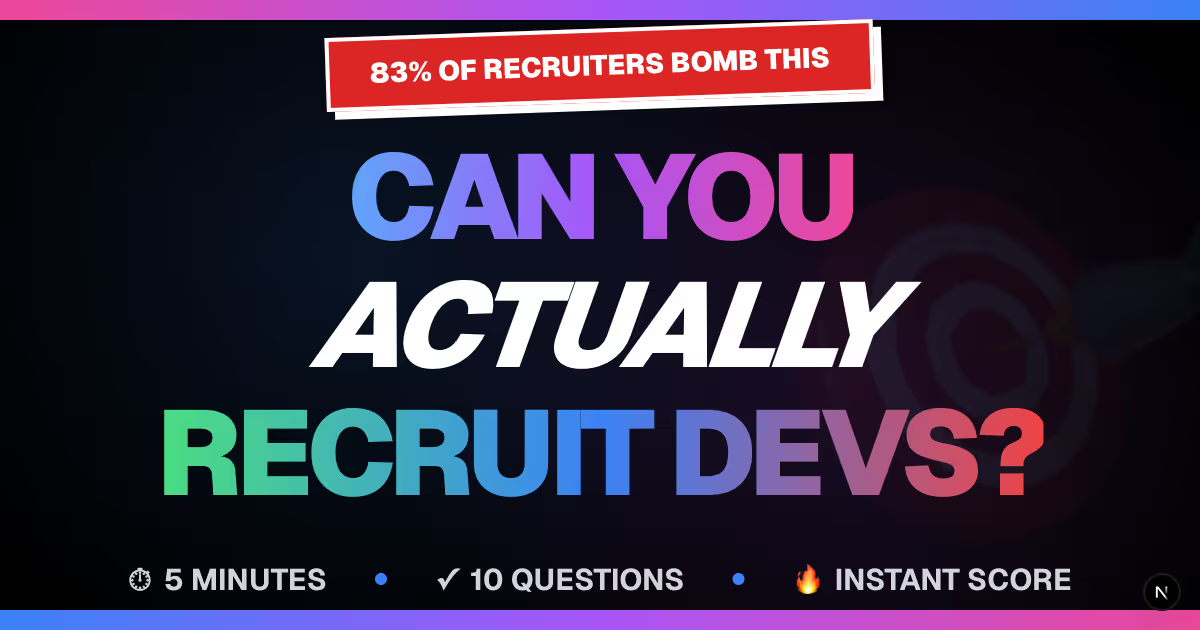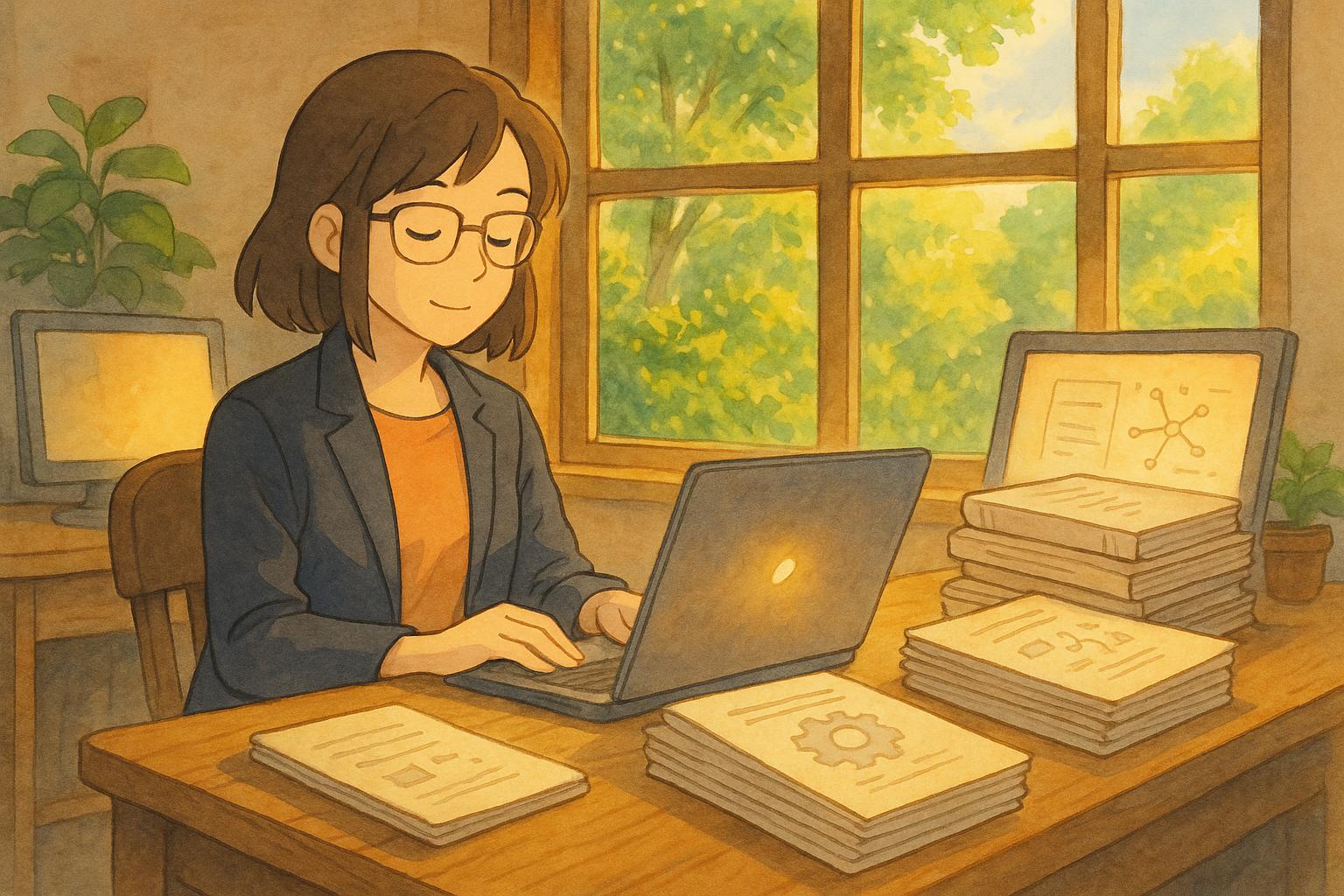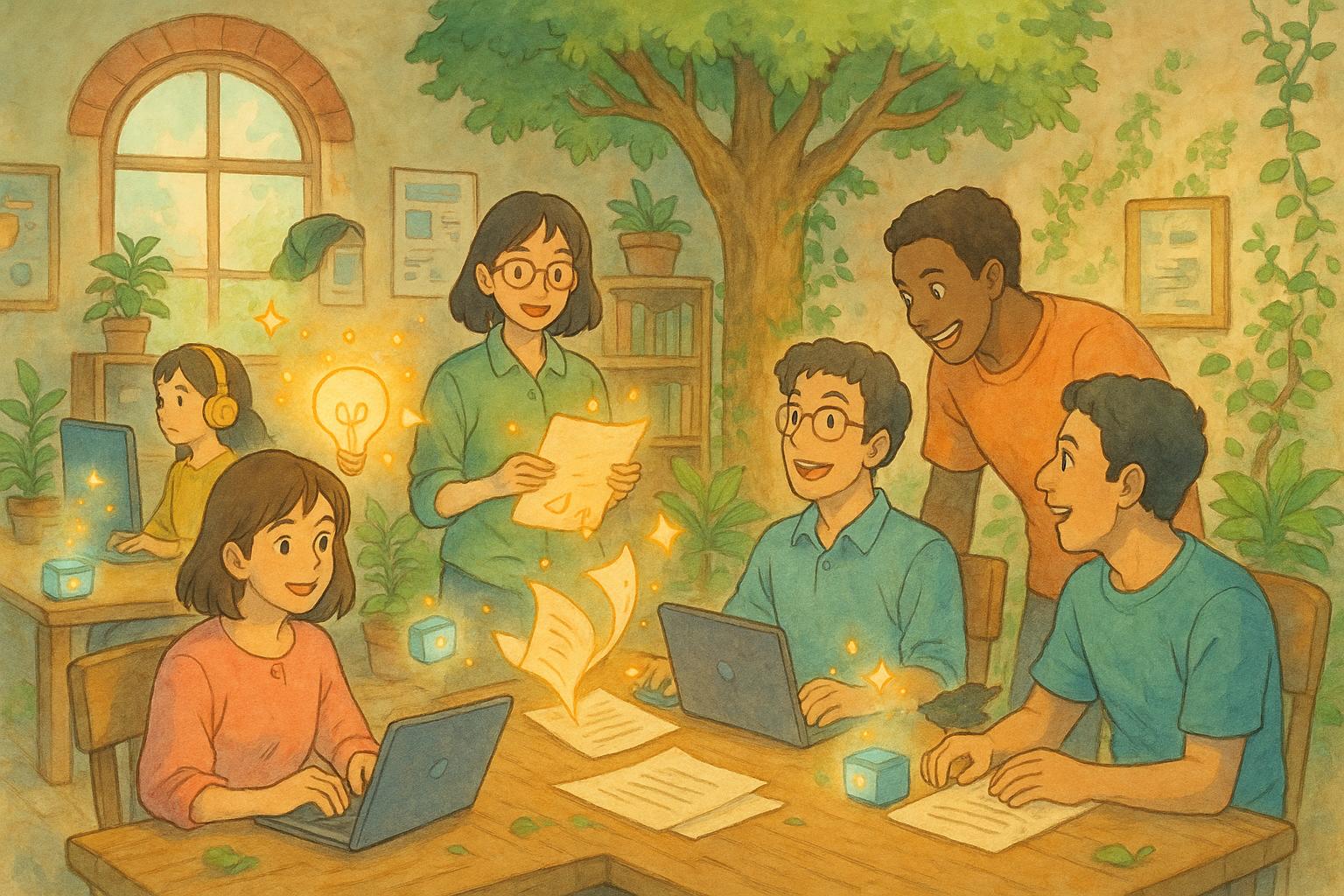


Soft skills are crucial for tech roles; learn how to effectively assess communication, collaboration, and problem-solving abilities in candidates.
Soft skills are just as important as technical expertise when hiring for tech roles. Qualities like communication, teamwork, and problem-solving directly impact collaboration, project success, and long-term growth. However, evaluating these skills can be challenging due to subjectivity and biases.
To hire effectively, focus on the following:
- Key Soft Skills: Communication, collaboration, and critical thinking are essential for technical professionals to explain ideas, work in teams, and tackle challenges effectively.
- Assessment Methods: Use structured interviews (e.g., STAR method), situational exercises (like pair programming), and reference checks to evaluate interpersonal abilities.
- Role-Specific Needs: Match soft skills to the job and team dynamics. For example, DevOps roles may require strong communication, while backend developers may need analytical focus.
- Structured Frameworks: Develop competency-based rubrics to ensure fair and consistent evaluations, reducing reliance on gut instincts.
- Bias Reduction: Use diverse panels, blind resume reviews, and standardized scoring to minimize biases and improve decision-making.
Key Soft Skills for Technical Candidates
In technical roles, success doesn't just hinge on expertise with tools or programming languages - it also depends heavily on soft skills. According to research from the Carnegie Foundation, 85% of job success comes from well-developed soft skills. This underscores why identifying these skills during the hiring process is essential to building high-performing teams.
A 2021 LinkedIn survey revealed that 92% of hiring managers rate soft skills as equally or more important than hard skills when evaluating candidates. Yet, many organizations still struggle to define what qualities like "effective communication" or "teamwork" actually look like. Below, we break down key soft skills and provide practical ways to assess them.
Communication Skills
Technical professionals spend a significant part of their day communicating. Whether explaining complex systems to non-technical stakeholders, documenting their work for colleagues, or collaborating across departments, their ability to communicate effectively can determine the success of a project. Clear communication minimizes misunderstandings, speeds up decision-making, and keeps teams aligned on shared goals.
One hallmark of excellent communication is the ability to translate complex technical ideas into language that makes sense to the audience. For example, a developer might need to explain system limitations to a product manager or a data scientist might present findings to executives with no technical background. Strong candidates can adapt their communication style to suit the listener.
Active listening is another crucial aspect. Professionals who listen carefully, ask clarifying questions, and confirm their understanding before moving forward are better equipped to deliver solutions that address the root of a problem. During interviews, observe whether candidates thoughtfully respond to your questions or seem more focused on waiting for their turn to speak.
Written communication skills are increasingly important as remote and hybrid work environments become more common. Technical professionals need to document their work clearly, participate in asynchronous discussions, and provide constructive code reviews. Those with strong writing skills can articulate their thought processes, explain decisions, and offer feedback that helps the entire team grow.
Collaboration and Teamwork
Building on communication, collaboration is the glue that holds technical teams together. Modern development practices like Agile, pair programming, and cross-functional teams rely heavily on effective teamwork. In fact, companies with strong collaboration practices are five times more likely to perform at a higher level.
Collaboration in technical settings requires working effectively with people who may have different skill sets, perspectives, and communication styles. Top candidates know when to ask for help, how to offer assistance without being overbearing, and how to contribute meaningfully to discussions - even when the topic falls outside their primary expertise.
Conflict resolution is another vital skill. Technical teams often include passionate individuals with strong opinions on how to solve problems. The best candidates can navigate disagreements constructively, focusing on finding solutions rather than being "right." They should be able to present their ideas clearly while staying open to alternative approaches.
Adaptability within teams also plays a key role. Technical projects often require shifting priorities, and team members may need to take on different roles. Some candidates excel at tackling individual tasks, while others thrive in group problem-solving sessions. Understanding how a candidate prefers to work - and their ability to adjust as needed - can help ensure they integrate well with your team.
Problem-Solving and Critical Thinking
At its core, technical work is about solving problems. The most effective professionals don’t just fix immediate issues - they aim for solutions that consider long-term impacts. According to the World Economic Forum's Future of Jobs Report, critical thinking, creativity, and emotional intelligence are among the top skills employers will seek by 2025.
Strong problem solvers approach challenges systematically. They can break down complex issues into manageable pieces, identify root causes instead of just symptoms, and evaluate multiple solutions before deciding on the best course of action. This methodical approach is invaluable for addressing system failures, performance bottlenecks, or ambiguous requirements.
Adaptability is equally important in problem-solving. With technology evolving rapidly and project requirements often shifting midstream, 80% of employers consider adaptability essential in the fast-paced tech industry. Look for candidates who demonstrate resilience, open-mindedness, and a proactive attitude when faced with unexpected challenges.
Critical thinking also involves strategic decision-making and risk assessment. Technical professionals must weigh trade-offs between different approaches, consider the long-term maintainability of their solutions, and anticipate how their decisions might affect other parts of a system.
Finally, creativity can set exceptional problem solvers apart. They don’t just rely on standard solutions - they think outside the box when tackling unique challenges. This ability is especially valuable when working on cutting-edge projects, optimizing performance, or finding ways to work within tight constraints.
How to Assess Soft Skills in Technical Candidates
Evaluating soft skills in technical candidates goes beyond technical questions. It’s about observing how they handle real-world situations that reflect the demands of the role. Let’s explore some practical ways to assess these skills effectively.
Behavioral Interviews
Behavioral interviews use the STAR method (Situation, Task, Action, Result) to dig into how candidates have managed specific situations in the past. This method operates on the idea that past behavior is a strong indicator of future performance. Instead of hypothetical questions like "What would you do if...?", focus on real experiences.
For example, to gauge communication skills, you might ask: "Tell me about a time when you explained a complex technical concept to someone without a technical background. How did you approach it?" Look for details about how they simplified the concept, checked for understanding, and ensured their message was clear.
To assess collaboration, try: "Describe a project where you disagreed with a team member’s approach. How did you handle it?" Strong candidates will show they can respect differing opinions, focus on solutions, and maintain professionalism.
For problem-solving, a question like "Can you walk me through a time when you faced a technical problem without an obvious solution? What was your approach?" can reveal their ability to think systematically, explore alternatives, and learn from challenges.
If answers feel vague, follow up with questions like, "What exactly did you say?" or "How did others respond?" Candidates with real experience will provide detailed, authentic responses, while those embellishing may falter when pressed.
To complement these interviews, real-time simulations can provide even deeper insights.
Situational and Role-Play Exercises
While behavioral interviews focus on past actions, situational exercises test how candidates respond in the moment. These simulations replicate real-world challenges to evaluate soft skills in action.
Collaborative coding sessions are especially useful in technical roles. During pair programming exercises, observe how candidates explain their thought process, accept feedback, and navigate challenges. Do they communicate clearly? Do they ask thoughtful questions or adapt when a partner suggests a different route?
Whiteboard discussions are another great tool. Present a system design challenge and ask the candidate to walk through their approach. Pay attention to how they organize their thoughts, use visuals effectively, and ensure their audience follows along.
For roles requiring teamwork, group problem-solving exercises can be illuminating. Present a realistic technical challenge to a small team that includes the candidate. Watch how they contribute to discussions, build on others’ ideas, and manage disagreements.
For remote roles, use tools like shared documents or virtual collaboration platforms to simulate team problem-solving. This can reveal how well candidates communicate and adapt in digital workspaces.
After interviews and simulations, reference checks can round out your understanding of a candidate’s soft skills.
Reference Checks and 360-Degree Feedback
Reference checks are often overlooked, but they can be a goldmine of information when approached thoughtfully. Instead of generic questions, focus on the specific soft skills your role requires.
For example, ask a previous manager: "How did [candidate] handle unexpected changes to project requirements?" or "Can you share an example of how they worked with team members who had different styles?" These targeted questions provide far more insight than broad inquiries about overall performance.
Peer references are especially valuable for technical roles. Colleagues often have the clearest view of day-to-day collaboration and communication. Questions like "How did [candidate] contribute to team discussions?" or "What was it like working with them on projects?" can reveal a lot about their teamwork and interpersonal skills.
For senior positions, consider reaching out to people who reported to the candidate. Their perspective on leadership, mentoring, and conflict resolution can be crucial for roles that involve guiding teams or managing technical initiatives.
A 360-degree feedback approach - gathering input from managers, peers, and direct reports - offers a well-rounded view of how a candidate interacts across different levels. While this method takes more time, it provides a comprehensive understanding of their interpersonal dynamics.
When conducting reference checks, be clear about the role and team environment. Explain the skills and qualities you’re prioritizing, and ask how the candidate’s abilities align with those needs. Specific questions like "Can you share an example of how they handled [specific situation]?" usually lead to richer, more actionable insights.
The key to meaningful reference checks is asking for specific examples and stories rather than general impressions. Just like in interviews, concrete details offer a clearer picture of how a candidate’s soft skills will translate to your team.
Frameworks and Tools for Structured Evaluation
Building on the earlier discussion about behavioral interviews and situational exercises, structured frameworks provide a reliable way to ensure fair and consistent evaluations. Moving from unstructured assessments to a systematic approach not only levels the playing field for candidates but also gives you consistent data to make better hiring decisions. This method ties directly into the assessment strategies we’ve already explored.
Competency-Based Frameworks
Competency-based frameworks break down soft skills into specific, measurable behaviors that align with the needs of the role. Instead of vague judgments like "good communication skills", these frameworks define what effective communication actually looks like within a specific work environment.
Start by identifying the key competencies required for the role. For example, a senior software engineer might need to clearly explain complex technical ideas to both technical and non-technical audiences, provide actionable feedback during code reviews, and lead productive discussions during sprint planning. Meanwhile, a junior developer’s competencies might include systematically breaking down problems and knowing when to seek guidance.
Each competency should be paired with clear behavioral indicators. For instance:
- A junior developer might be evaluated on their ability to approach problems methodically and ask relevant questions.
- A senior developer might be assessed on their ability to identify root causes quickly, weigh alternative solutions, and mentor team members effectively.
The STAR+ framework builds on traditional behavioral interviews by introducing a scoring component. After a candidate describes the Situation, Task, Action, and Result from a past experience, their response is scored against predefined behavioral benchmarks. Using a scoring rubric - like a 1-to-5 scale with detailed criteria for each level - ensures consistency. Documenting these frameworks is key, especially when multiple interviewers are involved, so everyone evaluates candidates using the same standards.
Platforms Supporting Soft Skill Assessments
Digital platforms can simplify the process of evaluating soft skills while maintaining consistency. These tools standardize candidate interactions and streamline data collection. For instance, daily.dev Recruiter offers a double opt-in introduction process that connects you with pre-qualified developers. This approach emphasizes genuine, professional interactions by engaging candidates on their terms, showcasing their communication style from the start. Additionally, integrating these platforms with your existing ATS and sourcing tools ensures that all insights are seamlessly incorporated into your hiring workflow.
Combining Multiple Methods for Better Insights
No single method can fully capture a candidate’s soft skills. A mix of evaluation techniques - like behavioral interviews, situational exercises, and reference checks - provides a deeper and more accurate understanding.
For example, a candidate might excel in a behavioral interview, demonstrating strong communication skills, but show less confidence during a situational exercise. This discrepancy highlights areas worth exploring further. Similarly, gathering feedback from multiple interviewers at different stages of the process can offer a more well-rounded view.
While structured scoring rubrics provide measurable data, combining them with detailed behavioral observations adds valuable context. This layered approach ensures your hiring decisions are both systematic and informed by the nuances of candidate fit.
sbb-itb-d1e6221
Making Data-Driven Hiring Decisions
Building on structured evaluation methods, a data-driven approach provides a solid foundation for making informed hiring choices. Once you've gathered data on soft skills, the next step is turning those insights into confident decisions.
Analyzing and Benchmarking Results
The key to extracting value from assessment data is setting clear benchmarks tailored to each role. Define what acceptable performance looks like for each soft skill. For instance, a junior developer might need a minimum score of 3 out of 5 in problem-solving, while a senior engineer should meet a higher standard, such as scoring 4 or 5 in mentoring and technical communication.
Benchmarks should reflect your team's actual needs, not abstract ideals. If your development team collaborates closely with product managers and designers, prioritize candidates with strong cross-functional communication over those who excel in technical documentation alone.
Weighted scoring can help balance the importance of different skills based on the role. For example:
- A tech lead might require a scoring breakdown like this: leadership and conflict resolution (30% each), communication (25%), and adaptability (15%).
- A DevOps engineer might need problem-solving weighted at 40%, with collaboration and communication each at 30%.
This method ensures no single strength overshadows critical weaknesses.
As you hire, refine benchmarks based on patterns observed among successful team members. For instance, if developers scoring 4+ in adaptability consistently perform well in their first six months, adjust your thresholds. Similarly, if candidates with high technical communication scores but low collaboration skills struggle during code reviews, rebalance your scoring system to address this.
Calibration sessions with interviewers are essential to maintain consistent scoring. Have multiple interviewers evaluate the same candidate and compare their assessments to align interpretations of the scoring rubrics.
These benchmarks lay the groundwork for assessing team fit, which is explored further below.
Ensuring Team Fit and Long-Term Success
Once you've established quantifiable metrics, it's time to evaluate how candidates will mesh with your current team dynamics. Map out your team's communication styles, work habits, and collaboration patterns to identify what soft skills will complement or balance the group.
For example:
- A detail-oriented team might benefit from someone with strong big-picture thinking and stakeholder communication skills.
- A team that's great at innovation but struggles with follow-through could use someone with exceptional organizational skills and attention to detail.
Role trajectory planning is another important factor. For a junior developer with growth potential, prioritize learning agility and openness to feedback over polished technical communication. On the other hand, a senior hire ready to lead projects immediately should demonstrate conflict resolution and delegation skills from day one.
The onboarding timeline also matters when assessing soft skill gaps. For example, skills like technical communication and documentation can often be developed through mentorship and practice. However, traits like resilience, intellectual curiosity, and a collaborative mindset are more ingrained and should take priority during evaluations.
If your company supports remote work, factor in the unique demands of distributed teams. Remote technical roles often require stronger written communication, proactive updates, and self-management compared to co-located teams.
By aligning these considerations with long-term role expectations and team dynamics, you can make choices that support sustained success.
Documenting and Reducing Bias in Assessments
Once you've gathered your evaluation data and considered team fit, documenting your process and reducing bias are critical for refining hiring decisions.
Support each score with specific behavioral examples. Avoid vague comments like "good communication skills." Instead, detail observations like "explained technical trade-offs clearly using examples and adjusted explanations when asked for clarification."
Structured evaluation forms help minimize unconscious bias by focusing on job-relevant behaviors. Use prompts like "Describe how the candidate approached problem-solving" or "Provide examples of collaborative behavior" instead of open-ended impression fields.
Diverse interview panels can provide a range of perspectives, picking up on different aspects of a candidate's communication, problem-solving, or teamwork. Just ensure all panel members are trained on your evaluation criteria to maintain consistency across interviews.
Blind resume reviews can also reduce bias during initial screenings. Remove details like names, graduation dates, or other potentially biasing information when reviewing portfolio projects, GitHub contributions, or written technical responses.
Bias training is another tool to address common pitfalls. For instance:
- Affinity bias might lead interviewers to favor candidates with similar communication styles.
- The halo effect can cause strong technical skills to inflate soft skill ratings.
- Attribution errors might result in harsher judgments of candidates who appear nervous or unfamiliar with your interview format.
Finally, post-hire tracking validates your assessment methods. Check in with new hires and their managers after 90 days and six months to see how well your predictions align with actual performance. Use this feedback to tweak your evaluation criteria and scoring thresholds for future candidates.
Make sure all data is securely stored, and follow employment laws regarding retention policies. Document your evaluation processes thoroughly to defend hiring decisions and protect candidate privacy throughout the process.
Conclusion: Building Better Technical Teams Through Soft Skills
When it comes to assembling successful technical teams, soft skills are the glue that holds everything together. While technical expertise is the foundation, it’s the ability to communicate, collaborate, and think creatively that pushes teams to thrive. As the tech landscape evolves - with remote work, cross-functional projects, and fast-paced innovation cycles - these interpersonal abilities have become more important than ever.
The most effective teams strike a balance: deep technical knowledge paired with individuals who can bridge communication gaps, foster understanding, and navigate the complexities of working with diverse personalities.
Key Takeaways
Structured evaluation frameworks take the guesswork out of hiring for soft skills. Instead of relying on intuition, use behavioral interviews, STAR-method questions, situational exercises, and collaborative coding sessions to gather measurable, role-specific insights into a candidate’s interpersonal abilities.
Reducing bias through documentation and diverse perspectives ensures fair assessments. By using structured evaluation forms, involving diverse interview panels, and tracking post-hire performance, you can validate your hiring methods and create a more equitable process for candidates.
Team dynamics are just as critical as individual skills. The right hire doesn’t just bring technical expertise - they complement the team’s existing strengths and fill critical gaps. For instance, a detail-oriented team might need someone with strong big-picture thinking, while a visionary team may benefit from a member who excels at execution.
Focusing on these elements ensures that soft skills enhance technical proficiency, creating teams that are as cohesive as they are capable.
Next Steps for Recruiters
- Review your current soft skill evaluation process. Take a close look at recent hires to identify trends between assessment scores and on-the-job performance. This helps you refine your scoring criteria and tailor them to specific roles.
- Develop role-specific competency frameworks. Align soft skill requirements with your organization’s needs by creating detailed rubrics for key skills. Train interviewers to apply consistent scoring methods for better results.
- Incorporate multiple assessment methods. Go beyond traditional interviews by integrating practical exercises, reference checks, and collaborative problem-solving sessions. This multi-layered approach provides a well-rounded view of a candidate’s abilities.
- Leverage specialized tools for soft skill evaluations. Use platforms to organize data, ensure scoring consistency, and maintain detailed records that support data-driven hiring decisions.
- Establish feedback loops with hiring managers and new employees. Schedule check-ins at 90 days and six months to evaluate whether your assessments align with actual performance. Use this feedback to fine-tune your evaluation methods over time.
FAQs
How can businesses fairly and accurately evaluate soft skills in technical candidates?
When it comes to assessing soft skills, using structured evaluation methods is key to maintaining fairness and accuracy. Approaches like the STAR method (Situation, Task, Action, Result), competency-based frameworks, and situational exercises are effective in reducing subjective judgments. These tools provide a more consistent way to measure how candidates demonstrate essential skills in real-world scenarios.
To take it a step further, incorporating psychometric assessments and AI-powered tools can add a layer of objectivity. These methods rely on data-driven insights, helping to minimize bias and ensure evaluations are grounded in measurable criteria.
Standardizing interview questions is another way to improve consistency. Pairing this with input from multiple evaluators - such as through 360-degree feedback - offers a broader and more balanced view of a candidate’s abilities. Together, these steps make the process more reliable and fair for everyone involved.
What are some effective ways to assess a candidate's soft skills during the hiring process?
To get a clear picture of a candidate's soft skills, try incorporating practical exercises that mirror workplace scenarios. Here are a few effective approaches:
- Role-playing exercises: These help gauge how well candidates communicate and adapt to different professional situations.
- Situational judgment tests: These are great for assessing decision-making, problem-solving abilities, and teamwork under pressure.
- Collaborative coding tasks: Perfect for observing how candidates collaborate with others and tackle challenges in a team environment.
Such exercises can reveal how candidates are likely to handle real-world challenges, helping you identify individuals who align well with your team dynamics and work environment.
How can technical teams effectively balance technical skills and soft skills when hiring for high-performing teams?
Technical teams can achieve a balance between technical expertise and interpersonal skills by incorporating both into the hiring process. This means combining technical assessments with behavioral interviews to evaluate candidates on their ability to do the job and work effectively with others.
For example, you can assess how candidates handle collaborative coding challenges, which not only tests their technical skills but also reveals how they communicate and work in a team. Similarly, situational exercises can shed light on their problem-solving approach, adaptability, and collaboration. Tailoring soft skill evaluations to the specific demands of the role helps teams make hiring decisions that strengthen both individual performance and overall team cohesion.
Related Blog Posts








